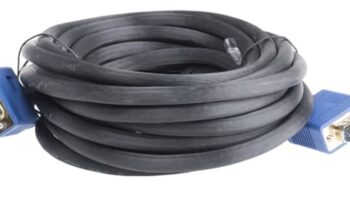Working at heights involves obvious safety risks—mostly falls. But while many people think of employees falling, the truth is that falls may also involve other people and objects, such as tools. In fact, the Bureau of Labor Statistics shows that there are over 50k recordable injuries from ‘falling objects,’ necessitating the use of tool tethering.
What Tool Tethering Is
Tool tethering refers to preventing tools and equipment from being dropped or falling. It often encompasses attaching tools to the operators using them or heavier tools’ cases.
The process doesn’t have to be complex; every system must be designed safely. Typical tool tethering systems have three parts: a tool lanyard, an anchor point, and a tether point.
So, whether you are working on roofs, scaffolding, or carrying out other important tasks at height, it will be best to have the right tools for working at height to ensure you don’t accidentally drop your telephone and hammers on your workmates on the ground.
Examples of Tethered Tools
Lifting bags and belts are the most common tethered tools for working at heights. They are mostly fitted with a steel D-ring, compatible with safety rings on your tethered tools, making them the best way to stay safe and organized at heights.
Tethered wrenches are other tools you will need when working at height. They are made of very strong metals, such as high-performance alloy steel. So, you can imagine the damage dropped wrenches can do when they accidentally fall on your colleagues as you work at heights. Fortunately, tethered wrenches are made to prevent such incidents. Apart from tethered wrenches and lifting bags & belts, other tethered tools that are important when working at high heights include the following:
- Lanyards and carabiners
- Tethered punches and hammers
- Tethered measuring tools
- Tethered cutting tools
- Tethered files
- Tethered pliers
- Tethered screwdrivers
- Tethered ratchets and sockets
Why Tool Tethering is Important
Accidents may still happen regardless of how careful employees are when doing their jobs. For employees working at a high height, some tools can accidentally fall off the ledge, potentially hitting workers working on the ground. Falling objects or tools may easily cause death or serious injuries. If a nine-pound tool falls 300 feet down, it may approach the ground at a speed of 100 miles per hour. Regardless of your head protection type, that is too much force that many helmets can’t handle.
Like other employees who use fall protectors to avoid falling from a high height, tools, too, come with fall protection devices. With tethering and fall protection devices, you will save lives, avoid damage, and prevent tool loss, as well as productivity.
So, don’t just focus on keeping your employees from falling. Tool tethering measures should also be used to protect workers working on the ground against falling objects and tools.
Ensuring bystanders’ and workers’ safety must be a priority in every workplace, especially in situations involving dropped object risks and elevated heights. Using the right tool tethering methods and following safety protocols can mitigate the risks associated with falling tools.





